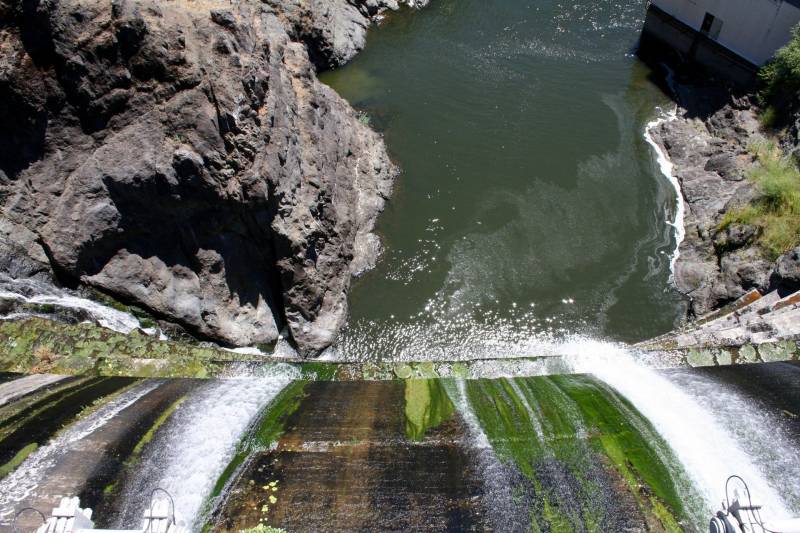Removed would be the four southernmost dams in a string of six constructed in southern Oregon and far Northern California beginning in 1918.
They were built solely for power generation. They are not used for irrigation and not managed for flood control. The lowest dam on the river, the Iron Gate, has no “fish ladder,” or concrete chutes that fish can pass through.
That’s blocked hundreds of miles of potential fish habitat and spawning grounds, and fish populations have dropped precipitously in recent years. Salmon are at the heart of the culture, beliefs and diet of a half-dozen regional tribes, including the Yurok and Karuk — both parties to the agreement — and they have suffered deeply from that loss.
Coho salmon from the Klamath River are listed as threatened under federal and California law, and their population in the river has fallen anywhere from 52% to 95%. Spring chinook salmon, once the Klamath Basin’s largest run, has dwindled by 98%.
Fall chinook, the last to persist in any significant numbers, have been so meager in the past few years that the Yurok canceled fishing for the first time in the tribe’s memory. In 2017, they bought fish at a grocery store for their annual salmon festival.
“It is bleak, but I want to have hope that with dam removal and with all the prayers that we’ve been sending up all these years, salmon could come back. If we just give them a chance, they will,” said Chook-Chook Hillman, a Karuk tribal member fighting for dam removal. “If you provide a good place for salmon, they’ll always come home.”
PacifiCorp has been operating the dams under an extension of its expired hydroelectric license for years. The license was originally granted before modern environmental laws and renewing it would mean costly renovations to install fish ladders. The utility has said energy generated by the dams no longer makes up a significant part of its portfolio.
In the original deal, PacifiCorp was to transfer its license and contribute $200 million to bow out of the removal project and avoid further costs and liability. An additional $250 million comes from a voter-approved California water bond.
U.S. regulators, however, agreed only on the condition that PacifiCorp remain a co-licensee along with the Klamath River Renewal Corp. — a nonstarter for the utility.
Residents have been caught in the middle. As tribes watched salmon dwindle, some homeowners around a huge reservoir created by one of the dams slated for removal have sued to stop the demolition.
They say their waterfront property values have already fallen by half because of news coverage associated with demolition and they worry about losing a water source for fighting wildfires in an increasingly fire-prone landscape. Many also oppose the use of ratepayer funds for the project.
Some Oregon lawmakers said Tuesday that Gov. Kate Brown had violated her constitutional authority by authorizing the deal without legislative or voter approval.
Further upstream, farmers who rely on two other dams are watching carefully. The removal of the lower four dams won’t affect them directly, but they worry it could set a precedent for dam removal on the Klamath.
More than 1,720 dams have been dismantled around the U.S. since 2012, according to American Rivers, and 26 states undertook dam removal projects in 2019 alone. The Klamath River project would be the largest such project by far if it proceeds.
